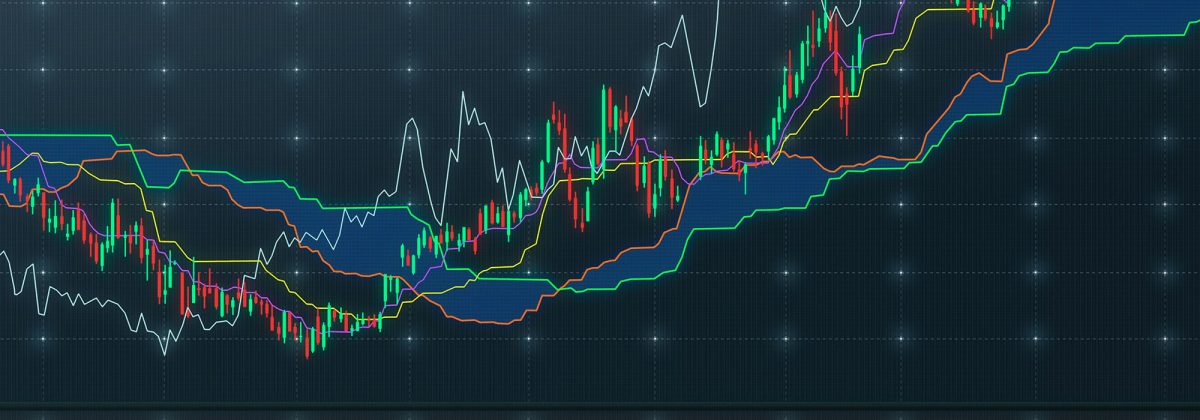How to Effectively Use Currency Correlation in Forex Trading

Forex trading requires a solid understanding of fundamental events and technical indicators. Most traders focus on these two things to improve their chances of turning a profit. However, to be a successful forex trader, risk management is crucial. One concept that can be of immense help in risk management is currency correlation.
Currency correlation, also called forex correlation, is the extent to which one currency pair is interrelated to a different currency pair, in terms of price movements. Given that forex trading is done in pairs, no single pair is ever completely isolated. So, you need to understand how one pair moves in comparison to others so you can make informed trading decisions.
How to Calculate Correlation?
If you want to keep tabs on the strength and direction of the currency pairs you wish to trade in, the best thing is to calculate the correlation yourself. The strength of correlation always lies between +1 and -1, where the the former is the maximum postive correlation and the latter shows maximum negative correlation.
Here are some simple steps to obtain correlation data between currencies:
- The first thing you need is a computer that has Microsoft Excel loaded on it.
- Look for charting packages on the internet that provide you with past or current currency prices.
- Export this price data to Excel.
- Make two columns with the names of the currency pairs under observation.
- Fill in the historical prices for the currency pairs under the respective column.
- Below one of the columns, in an empty cell type =CORREL (
- Now, highlight the entire data in one of the price columns. You will get a range of cells in the bracket of the CORREL formula
- Enter a comma symbol
- Repeat Steps 6 to 8 for the next currency pair
- Put a closing bracket at the end of the formula
- The value that is shown is the level of correlation between those two currency pairs
The one year, six month, three month and one month readings will give you a clear idea about the changes in correlation over time. You can choose between these readings, based on what suits your trading timeframe.
Although correlations can change, you won’t need to update your spreadsheet daily. Updating it once every few weeks or at least once a month can be good enough.
However, this method of calculating currency correlation can become cumbersome. Also, if there is even a single mistake in entering the data, it can reflect on all the values. So, it is better to use an automatic trading platform that will calculate all the necessary data without any hassles.
How to Use Correlation Data in Forex Trading?
Once you know how to find out the correlation, you are ready to use the information for your currency trading strategy. Here are some ways in which currency correlation can be used.
1. To Avoid Conflicting Positions
Firstly, correlation can help you avoid entering positions that cancel each other out.
For example, lets consider the currency pairs USD/CHF and EUR/USD. If you already know that they move in opposite directions most of the times, you would understand that a portfolio of long USD/CHF and long EUR/USD is the same as having no position at all. This is because when the EUR/USD rallies, the USD/CHF pair will experience a sell-off, since they are negatively correlated.
On the contrary, if we consider EUR/USD and NZD/USD, it is the same as doubling the same position, since there is a strong positive correlation between the two pairs.
2. To Diversify Risk
Diversification is another important factor to consider. Currency pairs such as the AUD/USD and EUR/USD do not have 100% positive correlation. So, you can use similar pairs to diversify your risk while still keeping a core directional view.
Let’s take a closer look at these pairs. To express a bearish sentiment on the USD, instead of purchasing two units of EUR/USD, you could buy one unit each of the EUR/USD and AUD/USD.
The imperfection in the correlation of the two pairs will allow you to increase diversification and marginally lower risk. Also, since the central banks of these currencies will have different monetary policies, if the dollar rallies, the other currencies might not be significantly affected.
3. To Hedge Positions
You can also use different point values to your advantage. For instance, with the USD/CHF and EUR/USD again, they have a near perfect negative correlation.
The value of a pip movement in USD/CHF is US$9.24 for 100,000 units, while for the EUR/USD, it is US$10 for the same number of units. This shows that you can hedge EUR/USD exposure with USD/CHF.
How Does Hedging Work?
Say you have a portfolio which is one short USD/CHF lot of 100,000 units and one short EUR/USD lot of 100,000 units.
In case the EUR/USD rises 10 pips, you would be down US$100 on this position. But since USD/CHF moves in the opposite direction of the EUR/USD, a short USD/CHF position could be beneficial, moving close to gains of around US$92.
In this way, the net portfolio loss would be reduced to US$8, instead of US$100. Obviously, hedging will also mean smaller profits in case of a strong sell off, but at least losses can be minimised.
Irrespective of whether you want to diversify your positions or want to find alternate pairs to leverage the view, it is crucial to understand the correlation between different pairs.
This knowledge can be helpful for traders who want to hold or are currently holding more than a single currency pair in their trading account. Proper understanding of currency correlation can improve chances of doubling up on profits, help diversify the risk and hedge positions, all at the same time.




